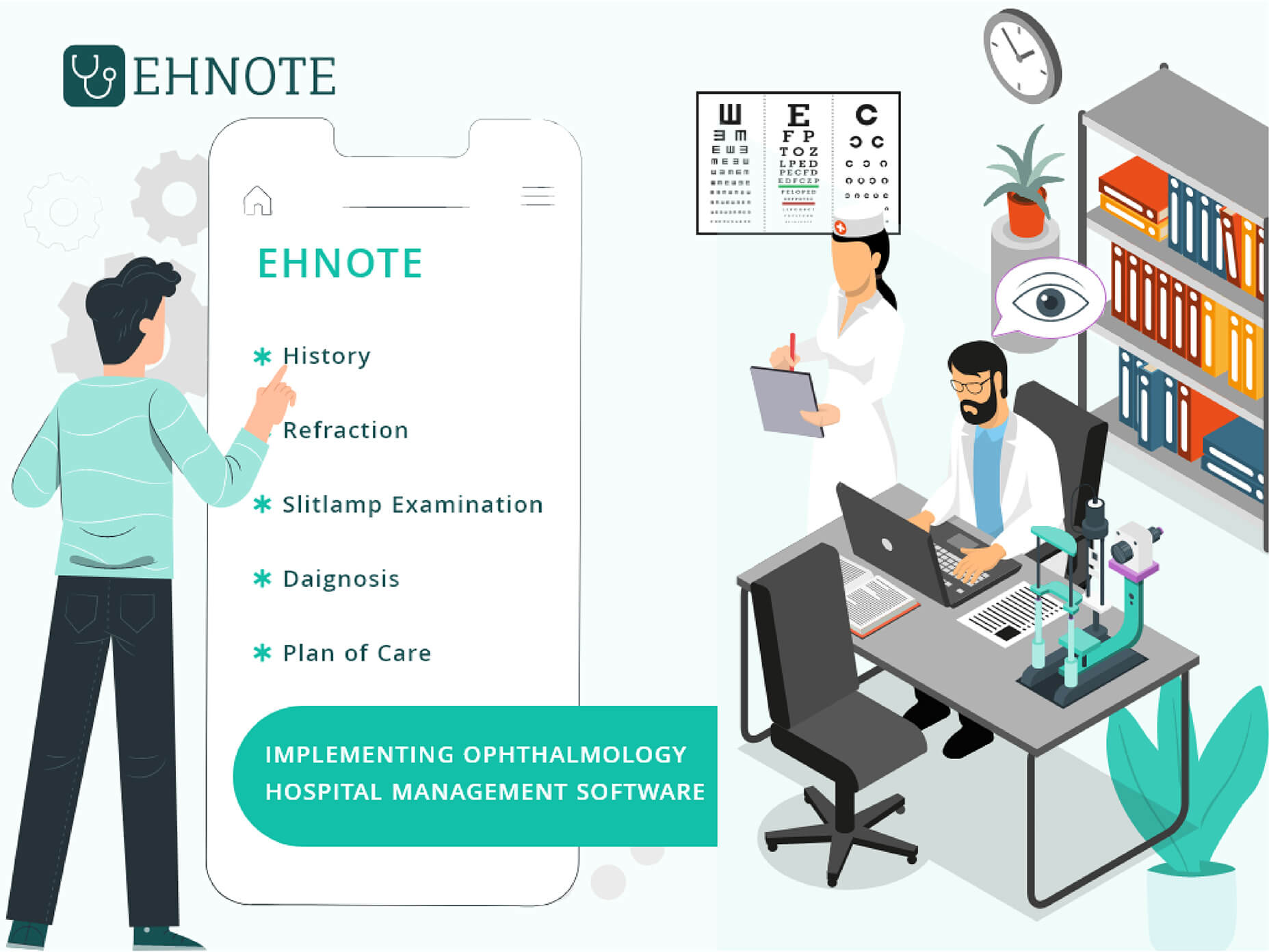Implementing ophthalmology hospital management software (HMS): a 5-step checklist

With just one ophthalmologist available for every 33,000 patients worldwide, Eyecare hospital administrators and owners must ensure efficient resource allocation across the patient journey. This is because the number of ophthalmologists graduating each year or the number of medical equipment at the facility cannot be increased rapidly. However, hospital management software can assist an Eyecare organization in better managing its resources and providing Eyecare to a bigger population.
Here's a quick checklist to make sure your Eyecare organization has the best possibility of successfully implementing the Ophthalmology Hospital Management Software (HMS).
1.Cloud-based vs. Client-based Platforms: If you've dealt with traditional systems before, you'd know the hardware impact of client-scope systems. Generally, client-server software systems are considered to be more secure. While it used to be a reasonable argument not long ago, continuing to believe in this notion would be a vague thought. Cloud systems are secured, allowing for the safe storage and transfer of patient data.
Beyond the security measures, cloud computing offers the added benefit of the Ophthalmology EMR provider being accountable for maintenance and upgrades. Imagine a client-based Practice Management Software that suddenly stops operating because the internal system is unable to handle the workload. On the other hand, cloud-based Hospital Management Software is designed to withstand unpredictably huge levels of user traffic.
2.Analyze Patient Needs Throughout the Patient Journey: Several modules and functions can be found in clinical management software. Such as appointment booking, pharmacy management, account management, outpatient and inpatient management. While selecting an HMS software suite can help your healthcare practice develop more quickly, it can also add costs in the form of a Generic Software that you may not want.
tart by doing a comprehensive need analysis across the patient journey. Examine each stage and analyze inefficiencies in the administrative, clinical, and operational management processes, beginning with the first interaction with the patient and ending with the patient's discharge from your Eyecare hospital. Evaluate whether the hospital management software is suitable for your Eyecare practice and can meet your ophthalmic requirements. Decide what features you need in your Ophthalmology Hospital Management software.
3.Explore the software with a thorough demonstration: If you are about to jump into the lake, it is a wise idea to first dip your toe in there to get an understanding of its depth. The very same principle should be applied while investing in Ophthalmology Hospital Management software.
More precise chances in assessment result from more accurate information! Because assessing an Ophthalmology Hospital Management system (HMS) is a deterministic activity in which you aim to determine whether the platform is suitable for your Eyecare practice.
Therefore, your Eyecare Clinical management Software should include a free and detailed estimation. Make sure you thoroughly experience it once and get active feedback from employees who will use it regularly. If this appears to make their job easier, you can consider it a worthwhile purchase.
4.Comprehensive systems would not need too many upgrades: You must examine the Ophthalmology Hospital management Software from two perspectives: how many upgrades it will require and how much each update will cost you. Even if there are no direct expenses for upgrades, your facility will experience difficulties. Unnecessary upgrades may potentially slow down the workflow and reduce the productivity of your staff.
Thus, the most basic approach to assess the risk of upgrades is to consider how extensive the system is. If it already has a wealth of features and functionalities, the majority of upgrades will be around security and bug fixes. You can afford such upgrades as they do not affect your eyecare practice's workflow and productivity. However, if you choose a ‘Generic' EMR software that will be upgraded with more features subsequently - you might have to weigh the risks associated with every upgrade.
5.Perform a Cost-Benefit analysis in addition to the price: The most fundamental evaluation you can perform as a hospital administrator or owner of an Eyecare organization is to look at the software's price. However, just because it's the most fundamental evaluation doesn't imply it's accurate.
Working with the Ophthalmology Hospital Management Software team to understand each feature and functionality in finer detail is the most realistic method to conduct this evaluation. Then determine how these attributes affect your day-to-day activities. This will show you how much value the system is bringing to your Eyecare clinic in terms of resource management, increased productivity, and improved patient experience. After you've analyzed the entire range of benefits, you'll be in an adequate stance to compare the cost.
Conclusion
The choice to invest in Ophthalmology Hospital Management Software is complex, whether you manage a small eye clinic or work in the administrative department of an eye care organization. It needs a detailed analysis of a variety of concerns. While you conduct a comprehensive assessment, utilizing this checklist can help you avoid overlooking essential aspects.
Contact EHNOTE and streamline your Eyecare facility with an integrated, certified, and cost-effective Ophthalmology Hospital Management Software. Click here to get a free demo.